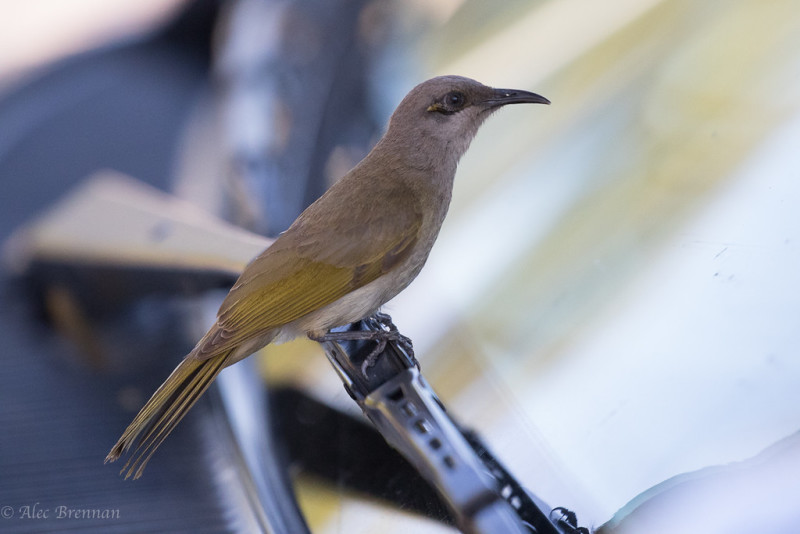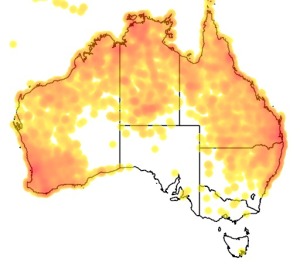Colours
Distinguishing features
The female is slightly smaller than the male, but the sexes differ only slightly in appearance. The head, back, rump, and upper tail-coverts are brown, and the wings a darker brown. The only distinguishing features are a small yellow patch behind the eye, which is indistinct in some birds, and dull yellow-olive panels in the folded wings and tail.
Its sexual dimorphism is slight. The adult male has a dark brownish-grey forehead and crown, contrasting with a brownish nape. The forehead and crown of the adult female is a similar olive-brown to the rest of the upper body.
A juvenile bird is similar to the female, but may lack or show only a trace of the yellow tuft behind the eye.
The bill is black, and is long, slender and curved slightly downwards, well adapted for probing deep tubular flowers. The gape in the male is black when breeding, and pale yellow at other times. The gape of the female is always pale yellow, and in the juvenile bright yellow and swollen. The iris is brown, and the feet and legs grey-black. (Wikipedia)
Size
- From 12 cm to 16 cm (Length of specimen)
Weight
- From 0.009 kg to 0.011 kg
Wingspan
- From 18 cm to 23 cm
Synonyms
Distribution
Distribution and habitat preferences
It is found in a wide range of wooded habitats, and is widespread across Australia. The nominate race ranges across a broad band from Newcastle on the New South Wales coast north and west to Queensland and the Top End to south-western Western Australia. It is rarely seen in Sydney, where populations have declined since the late 1950s, though it is being recorded in suitable habitats such as Homebush Bay and Kurnell in small numbers, and is a vagrant to the Illawarra region. It is rare in South Australia, and not present in Victoria and Tasmania. (Wikipedia)
Audio recordings
Diet
The Brown Honeyeater feeds mainly in the foliage and flowers in the canopy of trees and shrubs, though it does use all levels of the habitat including the ground.
Observations of foraging birds record the Brown Honeyeater feeding primarily on nectar, and taking some insects. Main sources of nectar include flowering mistletoe and mangroves, Bloodwood, Woollybutt, Cajeput, and Banksia and Grevillea species.
Nectar is primarily taken from flowers with cups of stamens, brush-shaped inflorescences, or tubular flowers. The Brown Honeyeater will hover above small flowers while extracting nectar, perch on a stem for large single flowers, and, in the case of Banksia flowers, perch on unopened florets at the top of the inflorescence.
Insects are most often gleaned from leaves or bark, and sometimes caught by sallying or taken from the ground. Insects eaten include beetles, flies, ants, wasps and bees. (Wikipedia)



